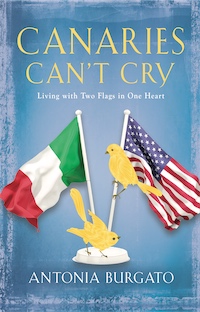| ||||||||||||
| Category: Memoir |
(requires Adobe Reader)
|
| About the Book | |
|
Canaries Can’t Cry begins in Sansego, a remote island in the Adriatic. The island features prominently in the first part of the story, as the Sansegoti’s character, superstitious, obstinate, hardworking, and moral, is endemic. It is a facticity caused by the lack of outside influence, for few people enter the island and even fewer leave. The Sansegoti are a race of hard workers, faith, and implacable mores. Work, religion, and inflexible social rules bring order to their lives and harmony among themselves. Problems arise when rules are broken. Anita is such a problem. Her life changes when, as a young woman, she defies her entrenched father on two separate occasions. First, when she refuses his choice of education for her, and, second, when she marries the love of her life against his will. This sets off a series of events that earns her the scorn of the islanders. Still, she struggles to gain independence within the trappings of a closed culture and to restore harmony in a life that demands conformity. But neither tempests nor ill winds could sway the Sansegoti to reform their ways, for the island has a hold its inhabitants to a life that is stronger than all the ills in the world. Anita’s husband dies while she is pregnant with her third child. Her rich father refuses to help her, and she is forced to marry an old, opera-loving man for the security of a home for her children. In remarrying, she once again breaks society’s rules, as widows do not remarry, and disgust follows when she becomes pregnant with the old man. She erred and must be ostracized. Only with the advent of a World War II, frequent bombings, and the occupation of the island by the Partisans do the Sansegoti change their ways. Able-bodied men are captured to fight in Marshall Tito’s army, and fishermen’s boats are confiscated to build his navy. Famine follows, and a population of almost three thousand is reduced to one of less than three hundred. Anita’s old husband is injured in a bombing of the cannery where he works, leaving him partially paralyzed. He promises her a home in Italy, where he has an apartment. The only way to leave the island is to escape at night by boat. The questions arise, How’s a crippled man and four children going to make a trip across partisan infested waters? Who would risk taking them? She entertains the thought of giving up her youngest boy to someone. That would lessen her burden and could make it easier to ferry across the sea into Italy—one child sacrificed for the good of the whole. Here begins Anita’s odyssey with the hold of her memories that impede her moving forward and, yet, she must. The story is told in two parts. Part 1 takes place east of the Atlantic with Anita’s daughter telling the stories her mother told. Part 2 takes place on the west coast of the Atlantic. Old world and new world collide, and conciliation seems improbable. The cultural gap is deeper and wider than the ocean. The past haunts Anita’s waking and sleeping hours. She tells stories of her life on the island to her daughter Antonia and imparts those values on her. Her daughter rebels, and that rebelliousness has an uncanny similarity to Anita’s rebelliousness as a young woman against her father. But those old stories have set roots on the young woman who now lives between the hammer and the anvil—the hammer pounding old values in her head, the anvil forging new ones.
|
|
| Reviews | |
I was moved by your insight and honesty. The family narrative shattered my complacent and stereotypical views. It brought out the tragedy of sexism, poverty, tradition and ignorance while I was struck by the sustaining power of hope and endurance of life in the face tragedy and suffering. You inserted a little “shock” with the admittance of relief at the mother’s passing. It is a common reaction from many children, but very few have the courage to admit it. It provides a connection to the daughter and an interest to find out how she will fly. A wonderful job in painting Anita's world. I could really imagine the village in which Anita lived. The story is written with incredible visual detail, the streets, the harbor, the views. I could picture every scene from the top of the island down to the sea.
|
|
| About the Author | |
 |
Antonia Burgato’s short stories and travel articles appeared in various magazines andanthologies. She is the recipient of the Rana Poetry award. Her writings originate from personal experience with people and places that have touched her in many ways. A world traveler, she currently resides in California with her husband. |

